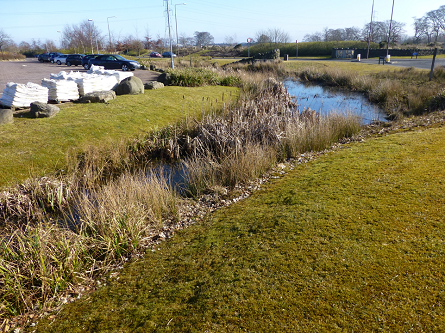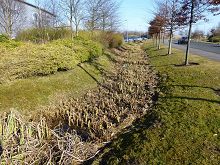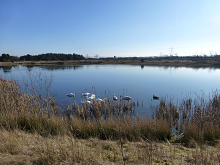WP2b. Sediment, Debris and Habitats
There is potential, through informed integrated design and decision making, to achieve multiple flood risk benefits through the use of Sustainable Urban Drainage Systems (SuDS) and Blue-Green infrastructure. Nonetheless, effective designs may be hampered by the limited understanding of sediment transport and debris dynamics in emerging vegetated and naturalized urban drainage systems.
Aim:
- Assess sediment transport and debris dynamics within Blue-Green urban drainage networks and develop improved approaches to accounting for the risks and benefits associated with Blue-Green infrastructure
View the WP2b summary of research activities 
Outputs
- A detailed understanding of how Blue-Green infrastructure treats fine sediment and key urban pollutants during multiple rainfall-runoff events
- A record of SuDS pollution levels and trends based on extensive fieldwork
- Evidence of the quantity of fine sediment being temporarily deposited within SuDS assets, which is necessary for SuDS maintenance and quantification of long term flood storage loss, and
- Identification of the ecosystem service benefits provided by SuDS assets and Blue-Green networks
- Several publications including
Key messages
- SuDS/Blue-Green assets provide sediment detention, but not necessarily in the way, or to the level, that existing manuals suggest
- SuDS/Blue-Green assets provide water quality improvement, with differing levels of benefits provided by different types of assets
- SuDS/Blue-Green assets can change the particle size distribution in stormwater by removing the larger sediment, but again each asset acts differently
- Field data shows the benefits of individual SuDS/Blue-Green assets: this is a step towards detention and pollutant remediation ranking of studied SuDS
- Research has illustrated the benefit of SuDS/Blue-Green networks, and that the composition of the network is more important than the number of assets in the network
This research has been drafted into new CIRIA guidance on SuDS Asset Performance, as well as helping inform the 2015 SuDS Manual.
Pathway – receptor field data collection and analysis



SuDS treatment train Storage pond
Using novel and innovative trace technology, debris and sediment transport monitoring was undertaken across established SuDS treatment trains and small urban watercourses.
Tagged debris and sediment incorporating Passive Integrated Transponder (PIT) technology was released across representative urban surfaces.
The conveyance, deposition and re-suspension of the sediment highlights the efficiency of the multi-element urban drainage network to detain or convey sediment and pollutants from the source (urban surfaces) to receptor (receiving water body).
See Allen et al., (2015) Provision, transport and deposition of debris in urban waterways, International Journal of Sediment Research.
The WP2b team comprised Scott Arthur, Heather Haynes, Deonie Allen, (Heriot-Watt University), Jenny Mant, Ian Holman and Sue White (Cranfield University).
WP2b is also linked with Jenny's work at the River Restoration Centre (RRC).